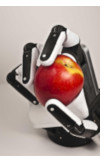Robot modeling and biomechanical applications

Robotic manipulators have become a common manufacturing tool in different industries. In the last decade, researchers have extended the applications of robots to many areas, having as practical result new types of robots. One of the most elusive applications has always been in the biomechanical domain, where robots have been designed either to assist patients or medical personnel, with the goal to improve the quality of life.
Independent of the application, the most important part in designing/analyzing a robotic structure is the mathematical model. Robot modeling includes primarily the kinematics and dynamics. Strongly connected with the robot model is the simulation and testing of the models.
In this research direction, we focus mainly on applications of robotics in the domain of biomechanics and in the implementation of relevant designs and control strategies. In particular, we focus on designing robotic systems suitable for each application and developing controllers that match the necessary specifications.
Our open and ongoing projects in this area are listed below, together with a selection of completed projects where relevant.
